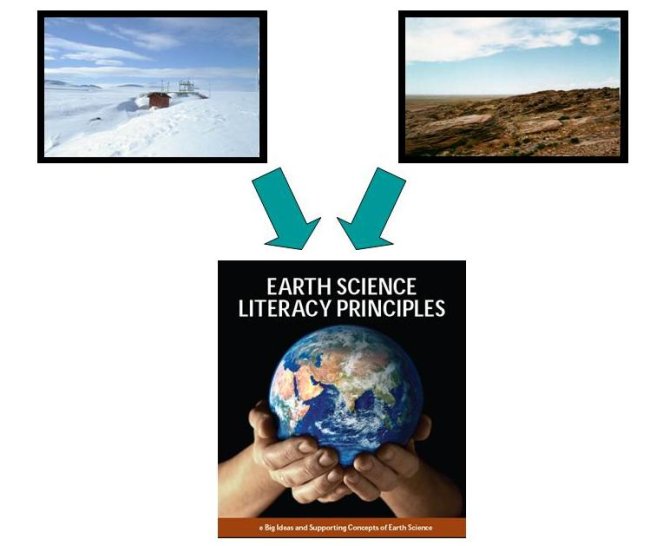A Note to Educators: Meeting the Earth Science Literacy Standards
Fingerprints of Emissions and the Carbon Cycle: Stable and Radiocarbon Isotopes of Carbon Dioxide is designed for an audience ranging from high school students to all adult citizens interested in better understanding atmospheric increases in carbon dioxide levels and how this affects the global carbon cycle.
This website focuses on presenting the key uses of isotopes and measurement techniques used by isotope scientists at the National Oceanic and Atmospheric Administration's (NOAA) Carbon Cycle and Greenhouse Gases Group. The information is in line with the Earth Science Literacy: The Big Ideas and Supporting Concepts of Earth Science, which had outlined scientific principles “that all citizens should know, determined by the Earth science research and education communities” 13. The complete Earth Science Literacy Initiative can be found at:
These principles are aligned with the U.S. science education National Science Education Standards, meaning that meeting these standards also meets the national science educational standards. For a matrix of this alignment, visit:

Big Ideas from the Literacy Standards
Of the “Big Ideas” deemed important for all Americans to know, this educational site discusses six of the nine ideas. These include:
- Big Idea 1. Earth scientists use repeatable observations and testable ideas to understand and explain our planet.
- Big Idea 3. Earth is a complex system of interacting rock, water, air, and life.
- Big Idea 4. Earth is continuously changing.
- Big Idea 6. Life evolves on a dynamic Earth and continuously modifies Earth.
- Bid Idea 7. Humans depend on Earth for resources.
- Big Idea 9. Humans significantly alter the Earth.
Additional Resources
Additional educational materials and resources concerning the work of NOAA's Carbon Cycle and Greenhouse Gases Group are available at:

 Previous
Previous
